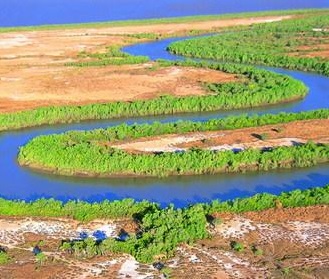River tool gives historic view
 Understanding a river’s history is key to predicting its response, and new tool gives a better view.
Understanding a river’s history is key to predicting its response, and new tool gives a better view.
Researchers at Griffith University have introduced a new metric called HARP (Hysteresis Area, Residual and Peaks) to better understand how rivers respond to flood events in terms of water quality.
A new study, published in the Journal of Hydrology, focuses on the relationship between river flow rates and pollutant concentrations during floods.
“During flood events pollutant concentrations can reach high levels that affect ecosystem and human health,” says lead researcher Dr Melanie Roberts.
“Variations between flow and pollutant concentrations are associated with hysteresis, where the state of a system lags behind the stressor driving a response, which occurs in a wide range of systems.”
Hysteresis, which causes a delay in a system's response to stressors, can have ecological significance.
Dr Jing Lu, a co-author, noted that it can create a false impression of a system's resilience. It may seem resilient until a sudden regime shift occurs due to the cumulative effects of stressors.
Understanding hysteresis is vital for predicting transitions between different ecosystem states, but many models have failed to capture these transitions because they do not consider past stressors and system properties.
Professor David Hamilton, Deputy Director of the Australian Rivers Institute, says that understanding pollutant hysteresis during storm events can help develop more effective pollutant management strategies.
HARP is intended to provide a simple and effective tool to analyse storm event dynamics, water quality changes, and the potential for regime shifts.








 Print
Print